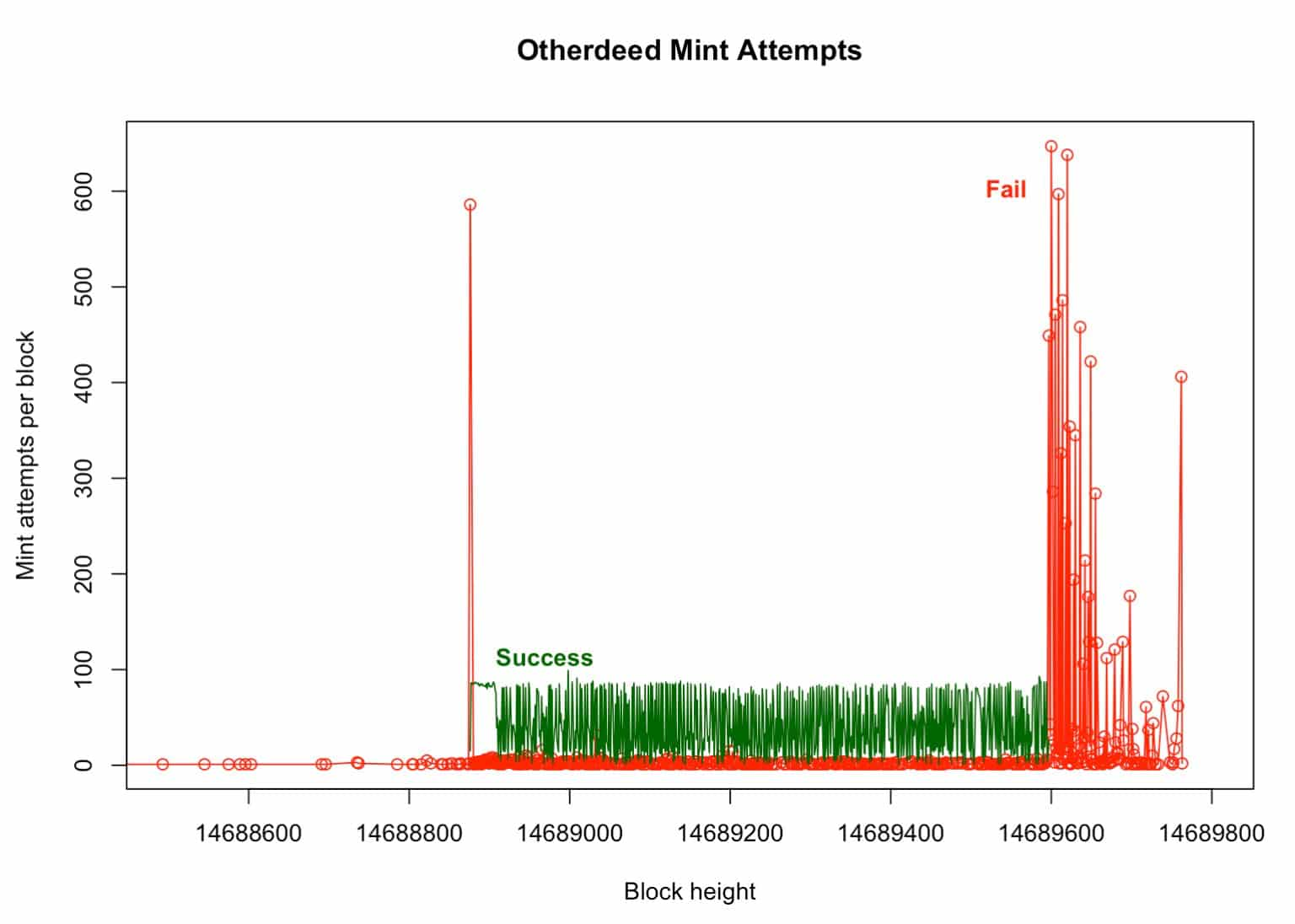On April 30, Yuga Labs, the creators of Bored Ape Yacht Club (BAYC), launched their much anticipated “Otherside” metaverse land non-fungible tokens (NFT) mint on Ethereum.
Even though the Yuga Labs team stated before the launch that they were taking precautions to “dramatically soften the potential for a massive gas war,” the mint ended up producing the highest gas surge in the history of Ethereum, with daily average gas prices reaching over 800 GWEI over $150 million spent on gas fees during the mint, according to data from CoinMetrics.

The frantic drive to mint resulted in a significant number of transactions that did not go through. Over 10,000 unsuccessful transactions and over $4 million in failed transaction fees were incurred by users who attempted to mint but set the gas price too low, resulting in their transaction not being validated before supplies ran out.

Since payments from unsuccessful transactions cannot be recovered directly, Yuga Labs has committed to refunding the fees from their own pockets to individuals who have been impacted.
Why are the ETH gas fees so expensive?
Each time an Ethereum transaction is sent, users essentially determine the maximum gas price they are prepared to pay. The gas price impacts just the price the consumer pays per unit of gas used; it has no effect on the quantity of gas required to complete the transaction.
Multiple variables contributed to the enormous gas increase and ETH burn that occurred during the Otherside land launch. As a starting point, the smart contract employed throughout the minting process was not optimized for the gas economy. Optimizations alone might have saved tens of millions of dollars in transaction fees.
Nearly $100M has been spent on gas for the BAYC land sale in one hour. This is money that could have gone to Yuga or stayed in user's pockets.
— Will Papper ✺ (@WillPapper) May 1, 2022
The contract had nearly zero gas optimizations. I'll explain a few gas optimization tricks that could have saved many millions below 👇 pic.twitter.com/CsYvWdEQKc
In addition, and perhaps more significantly, as Vitalik Buterin pointed out, the mint design had a fatal flaw: Yuga Labs set a fixed price for each mint of 305 ApeCoin (APE) rather than establishing a system that would allow the market to determine a reasonable price for each mint.
Don't think optimizing the contract would help. Regardless of contract details, tx fee goes up until list price + tx fee = market price. If gas usage per purchase decreased 2x, the equilibrium gas price would have just been >12000 gwei instead of 6000.
— vitalik.eth (@VitalikButerin) May 1, 2022
Despite the fact that Yuga Labs performed KYC and restricted the initial wave of mints to two NFTs per address, demand nevertheless outstripped supply, resulting in a situation where not everyone who wanted to mint was allowed to do so.
As a result, market players competed based on the price of gas, attempting to outbid one another and be the first in line to claim mint land before the supply ran out completely.
 finbold.com
finbold.com